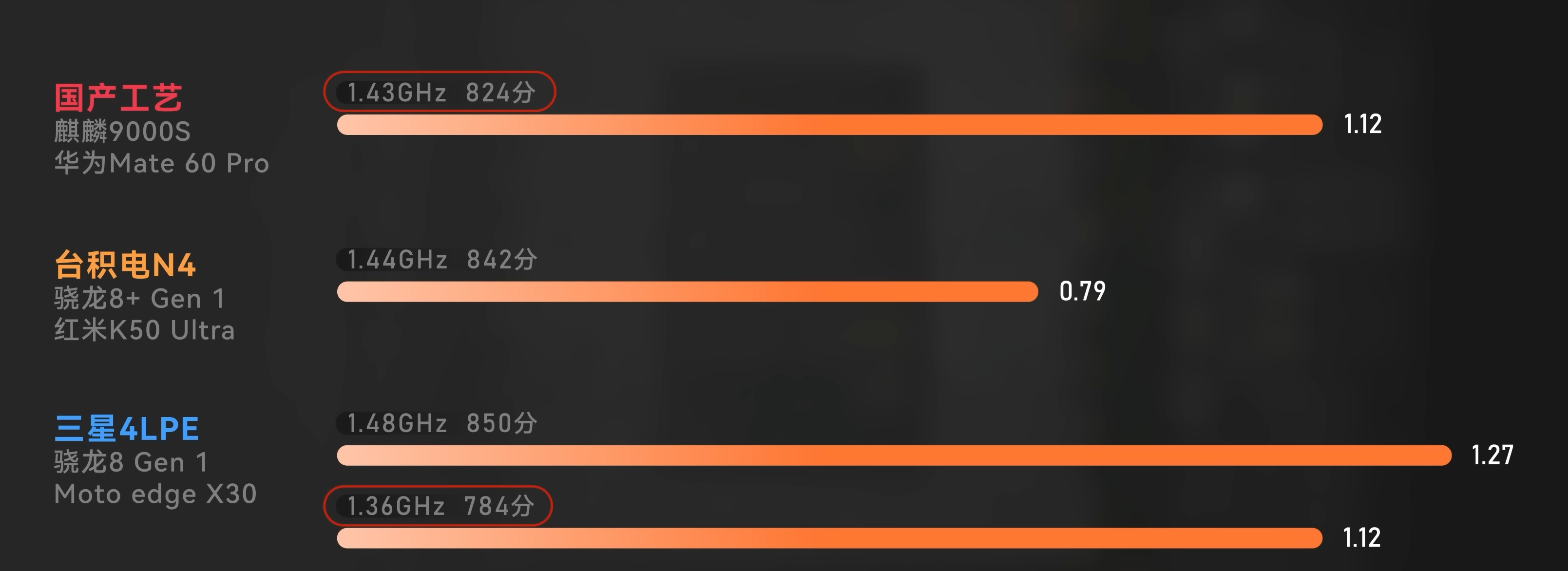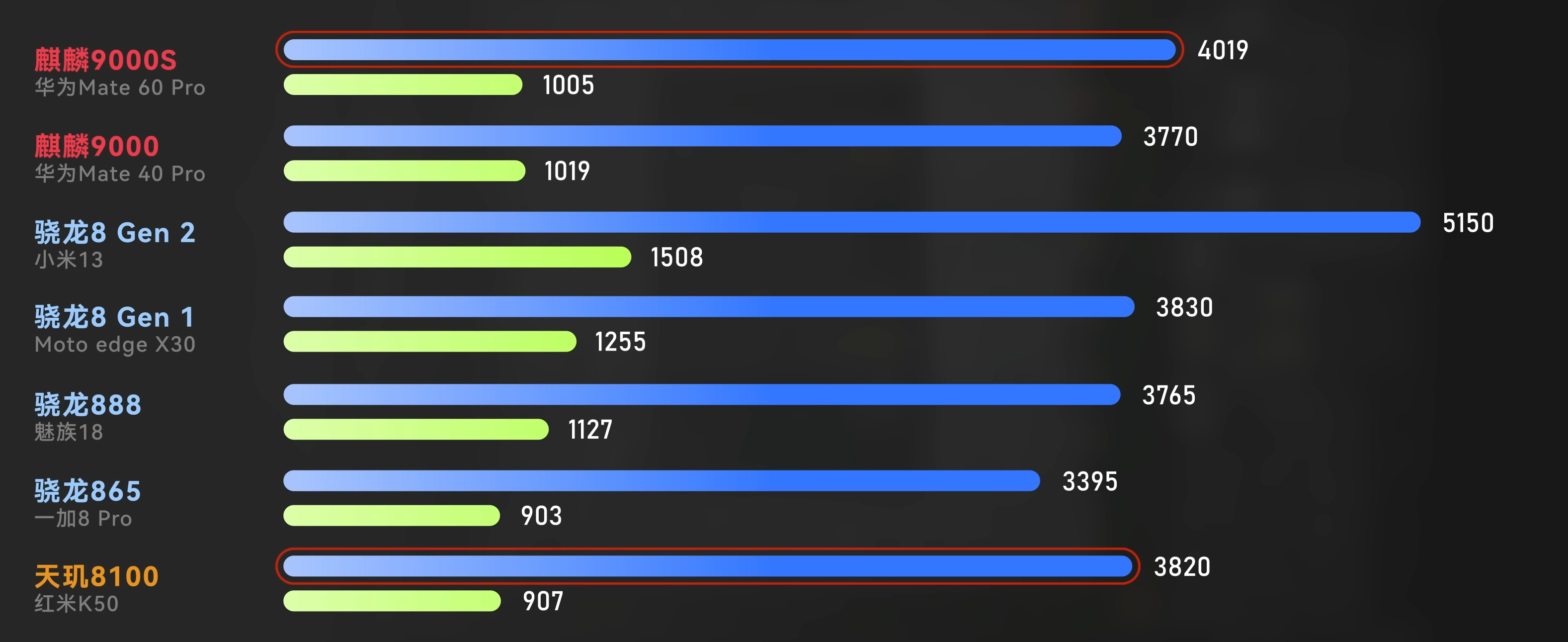
World News
A SMIC "7nm" Cortex-A510 core is more efficient than a Samsung 4nm LPE Cortex-A510 core although TSMC 4nm remains incomparable.

The Kirin 9000S is about the same size as the original Kirin 9000 chip, which was made using TSMC 5nm. That implies a transistor density that is closer to 5nm than it is to 7nm.
It is competitive with 5nm chips. Performance and efficiency are equivalent to the SD 888, and better than the Exynos 2100. The Kirin 9000S has custom Taishan cores with SMT allowing it to achieve a better multi-core score than all but the SD 8G2. Still the Kirin 9000S doesn't quite match the power efficiency of the original 9000 and the custom Maleoon 910 GPU doesn't have the raw performance of the original's Mali G78 MP24.

All evidence points to SMIC "7nm" being comparable to Samsung 5nm LPE in density, performance and efficiency.
Even with just auto translated subtitles, the Geekerwan video was incredibly informative unlike the...
Trash article by Bloomberg as always absolutely bereft of any of the technical details that might have made the TechInsights report actually interesting. Instead they decide it's better to waste the reader's time by shoving in the useless opinions of stock hawkers, business school "analysts", and people who are paid to brainlessly toe the state department line. Nobody left with a relevant computer engineering background in the west apparently. What a bait-and-switch, I regret bothering to read it. I can't stand the slimy way US mainstream media tries to manipulate sentiment.
Those graphs you presented alone were pretty informative.
How come Xiaomi has no problem obtaining the competing Snapdragon 8 gen 2 for the Xiaomi 13?
The US government placed Huawei into the US's so called "entity list". Qualcomm needs US government authorization to sell to Huawei and they're limited to selling 4G SOCs.
The P60 having the SD 8+G1 might be lag from Qualcomm having to make a 4G variant or lag from Huawei transitioning from Kirin to SD SOCs. Alternatively it could just be that the SD 8G2 is not worth the price Qualcomm is selling it at given that Poco doesn't bother to use it for their best phone, the F5 Pro.
There are no trade restrictions to selling to other Chinese smartphone brands. Qualcomm would collapse if it weren't allowed to sell to them. BBK, Transsion, and Xiaomi buy up most of Qualcomm's phone chips and make most of the world's phones. Samsung uses its own Exynos for the A series phones that make up the bulk of its sales.
A YouTube link was detected in your comment. Here are links to the same video on Invidious, which is a YouTube frontend that protects your privacy:
Perplexity summary: The article from Bloomberg[1] reports that Huawei's latest smartphone, the Mate 60 Pro, is powered by a new Kirin 9000s chip that was fabricated in China by Semiconductor Manufacturing International Corp (SMIC). This chip is the first to utilize SMIC's most advanced 7nm technology, which suggests that the Chinese government is making some headway in attempts to build a domestic chip ecosystem. The article also notes that Huawei is reportedly developing its own Wi-Fi, Bluetooth, and power management chips. Other sources, such as Swarajya[2], ThinkChina[3], TechHQ[4], and The Verge[5], speculate on how Huawei was able to develop its own chips despite US sanctions. Some sources suggest that Huawei may have used its inventory from 2020, while others speculate that the chips were manufactured by SMIC or even Huawei itself. Chinese benchmarking website AnTuTu has identified the Mate 60 Pro's CPU as the HiSilicon-designed Kirin 9000s, which supports 5G[6]. Overall, the article and other sources suggest that Huawei's use of domestically produced chips in the Mate 60 Pro is a significant development in China's efforts to build a domestic chip ecosystem and circumvent US sanctions.
.